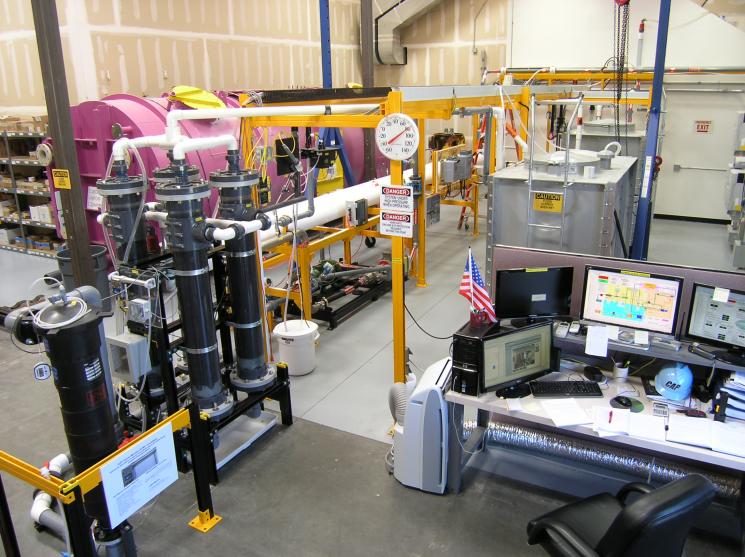
Desalination is normally an energy intensive process, but by collaborating with Energy Department's National Labs Campbell Applied Physics has found a way to make seawater drinkable while using 50 percent less energy. | Photo courtesy of Campbell Applied Physics.
August in Washington, D.C., means hot weather, summer vacations, and an onslaught of tourists. But for one group of visitors it meant an opportunity to discuss ways to bolster America’s manufacturing capacity and grow our economy.
Yesterday David Danielson, the Energy Department’s Assistant Secretary for Energy Efficiency and Renewable Energy, hosted a roundtable at the White House with leading high-tech manufacturers, research centers, academia, think tanks, and federal agencies to discuss opportunities for -- and challenges to -- U.S. competitiveness in advanced, clean energy manufacturing. Jason Miller, Special Assistant to the President for Manufacturing Policy, and Ari Matusiak, Executive Director of the White House Business Council, also joined the roundtable. The businesses represented yesterday ranged from solar and battery to fuel cell and lighting manufacturers -- many supported by the Energy Department through grants or research partnerships. The roundtable focused on strengthening public-private partnerships in manufacturing research, technology commercialization, and industry cluster formation.
One of the participating companies was Campbell Applied Physics. Once a defense contracting company, Campbell Applied Physics (CAP) waded into the water business 16 years ago. With the company motto “Doing Good While Doing Well,” CAP is driving the development of an ultra-efficient desalination technology. Normally an energy intensive process, the company has found a way to make seawater drinkable while using 50 percent less energy and remaining competitive with other sources of water. The company also has a focus on the environment, improving the desalination process every step of the way. Using a technology called plasma chemical reactor, CAP is able to clean the seawater without the use of chemicals. The next big challenge for the company is figuring out a way run all of its desalination plants off renewable energy in the next two years, and it is working with the Energy Department’s National Labs to make this a reality.
For the past 12 years, CAP has collaborated with the National Labs to create the technologies used for the company’s advanced seawater reverse osmosis. Through a corporate research and development contract, the National Labs work as the research arm for desalination advancement while CAP develops the technologies. When asked about the company’s relationship with the National Labs, CAP President Robert Campbell says it has been invaluable. “We have achieved what we have in large part with help from the Department of Energy.”
This year, the company will start manufacturing the equipment needed for its innovative desalination process. Because of its current public-private partnership with Oak Ridge National Laboratory, it is important for CAP to keep the desalination technology manufacturing close to where the research happens. With facilities in California, Michigan, and Tennessee, the company estimates it will employ hundreds American workers to make its desalination machinery. While the company has overcome most of its technology challenges, it is now wrestling with how to ensure these manufacturing jobs stay in the United States, something that is not only important for CAP but also the U.S. economy, says Campbell.
Campbell Applied Physics is not alone in this mission to create more manufacturing facilities and jobs here at home. The Department of Energy is committed to supporting more companies to keep their products “made in America,” in collaboration with the Administration’s broader Advanced Manufacturing Partnership. The first of many stakeholder discussions, yesterday’s roundtable will inform the Administration’s evolving manufacturing strategy and identify the key areas where the United States can compete in advanced clean energy manufacturing -- and create an economy that is built to last.





